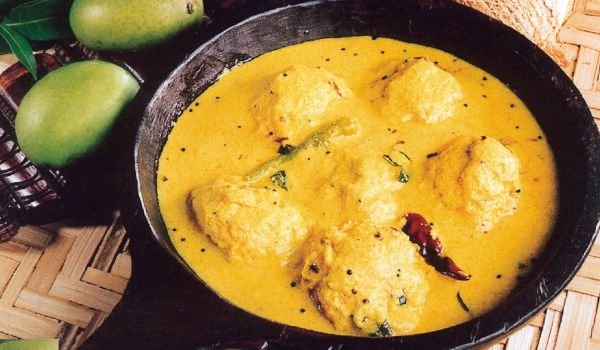What we know as “curry” has a long and curious history.
By early 1940-ies the word “curry,” in one form or another, had been assimilated into the cultures of Fiji, Japan, and Singapore; made its way to South Africa, Jamaica and Guyana; and even popped up in Britain, Germany, and Scandinavia (see: currywurst and curried herring). Even Americans had been eating it for a century, as the first American cookbook, 1824’s The Virginia Housewife, featured a curry recipe.
However, one of the only places in the world that didn’t have a dish called curry was, curiously enough, India.
That word “curry,” now as then, has a meaning as vague and inclusive as its ingredients. It can mean any stew made with Indian spices, as well as the yellow spice powder (usually a mixture of turmeric, coriander, cumin, and fenugreek) used in raisin-studded chicken salads. It’s not difficult to trace the spread of curry—it traveled by sea, following traders and slavers and laborers, the ancient vectors of colony and conquest.
The Portuguese first came to India’s palm-toothed southern shores in 1498, in search of cardamom, cloves, and black pepper, each among the world’s most valuable commodities. Lacking a word to describe the spicy, coconut-thickened stews they found there, they went ahead and made one up: carel, taken from the Tamil word kari.
The meaning and origin of that Tamil word is surprisingly opaque. Dr. Lizzie Collingham, author of the book Curry: A Tale Of Cooks And Conquerors, says it meant something akin to “biting.” Colleen Taylor Sen, food historian and author of the book Curry: A Global History, gives the more common etymology of “spiced sauce.”
The British East India Company was incorporated on the last day of 1600, and within a century it had wrested mercantile dominance from the Portuguese. It also took the word carel, which their clumsy Anglo-Saxon tongues turned to “curry.” They used it to describe the wide range of spiced stews prepared by the native cooks, who politely adjusted their complex cuisine for the meeker palates of their invaders.
Back in India, British companies were already manufacturing curry powders with names like “The Empress” and selling them not just to London housewives, but to a captive audience of colonial subjects. The British continued to bring curry powder with them wherever they went, and curry spread fast all across South East Asia.
Inevitably, the word curry also made its way back home. In India, curry’s not so much a flavor, or an ingredient, or a generic term for spice mixes. (That’s masala.) Instead, it turns up on English-language menus to indicate gravy-based—or moist—dishes.
Original Source: The Takeout Magazine
Aastha Devotional has a comfortable dining room where you can enjoy a delicious meal on any occasion. Visit us at Aastha Devotional and experience authentic Indian dining for yourself. We look forward to serving you!
